Morocco beckons! Oh, the allure of exotic names like Marrakesh & Casablanca & Ouarzazate. Scenes conjured up in one’s mind – bustling markets overflowing with brightly-colored wares, a labyrinth of winding, narrow lanes in old cities, and oasis towns with earthen fortress walls glowing golden orange in the desert sun. Let’s not forget visions of camels traversing over the Sahara Desert’s endless sand dunes. Yep, it’s really true…I’m going to Morocco!

I’m excited to share details with you of my upcoming trip to Morocco – the itinerary is wonderful! I am traveling with friends on a 3-week Morocco tour with Overseas Adventure Travel (OAT). Three years ago, I traveled to Turkey with OAT & it was a great experience.
OAT is a U.S. based tour operator that specializes in small group (less than 16!) adventure travel for Americans age 50+. They are culturally & educationally-focused, and their tours offer authentic cultural interactions with the local people. Plus, OAT is reasonably priced, yet still provides good quality – just my kind of travel!
Morocco Sahara Odyssey
On our Morocco Sahara Odyssey tour, my group of 14 fun & adventurous travelers (all friends!) will have a local Moroccan “OAT trip leader” (his name is Aziz) to guide & inform us throughout the tour. The trip starts and ends in Casablanca. We will make a grand circle around the country by bus seeing all the best sights. (see map)
We are traveling the end of October through mid-November, which falls during the best time to visit Morocco – after the heat of summer and before the cold of winter. Day time temps should be in the 60s & 70s (F) with evening lows in the 50s. The Sahara Desert will be colder at night, possibly into the 40s.
OAT’s philosophy is that to really understand the spirit of a country, you need to meet the people who live there. So, they create “people to people” opportunities on each tour, including OAT’s signature “A Day in the Life” experience with visits, conversations, and home-hosted meals with the locals.
We’ll dine with an urban family in Fez, meet nomadic families in the Sahara, and enjoy our “Day in the Life” with Berber community members in Ait Benhaddou. Past OAT Morocco travelers always rave about how much they loved the warm, friendly Moroccan people!
We’ll be staying in a variety of lodging, from nice hotels to a tented camp in the Sahara to authentic riads (in Fez & Marrakesh). A riad is a Moroccan home that has been converted into an elegant hotel with an open-air, Andalusian-style courtyard. They usually include intricate handmade tilework, calming fountains, and multiple stories with rooms overlooking the courtyard. Sounds lovely!
Quick Primer on Morocco
Travel in Morocco enthralls even the most experienced adventurer. In fact, Morocco is one of OAT’s most popular tours – and they do cover the world! Plus, the fresh, tasty Moroccan cuisine should be another highlight. Apparently, the food is so much more than just couscous & tajines (exotic warm stew).
Located in the northwest corner of Africa, Morocco is around the size of California. Its landscape is incredibly varied – from majestic desert to rugged mountain-scape to fine beaches (on Atlantic & Mediterranean coasts). The country has a population of 36 million, including the Berbers, Morocco’s proud indigenous people.
Arabs and Berbers account for around 99% of the Moroccan population. Therefore, Arabic and Berber are the official languages. In fact, we’ll get a short lesson in Arabic from Aziz on one of our first mornings. I doubt I’ll be fluent by the end of the trip – hah!
In addition, Spanish (in the north) and French are also spoken (from the days of colonization before independence in 1956). Luckily, English is spoken more and more, especially by the younger people. I’m sure I’ll be using the Google Translate app on my phone since my French is “très minimal”.
As for religion, Morocco is 99% Muslim. Like Turkey (and unlike deeply conservative Saudi Arabia), it is a relatively open society. Their grand mosque in Casablanca, which we’ll visit, is very welcoming to visitors. And, during our 2 days in the desert tented camp, we’ll have a discussion with Aziz to learn more about Islam and clear up the many likely misconceptions we have about the religion.
OAT’s “Morocco Sahara Odyssey” tour has a fabulous tried & true itinerary, seeing the best of the country. Below are all the places we will be visiting, along with highlights of the main sights and activities planned. This should give you a good flavor of our trip. Plus, if you’re considering future travel to Morocco, this can help with planning your own itinerary.
Casablanca
We start our journey in Casablanca, a modern cosmopolitan city which serves as Morocco’s commercial center. We won’t spend a lot of touring time here as more delectable sights await in other parts of the country. However, I’m sure we will pay a visit to Rick’s Café (opened in 2004) to relive the glory days of the classic & beloved 1942 film “Casablanca” with Humphrey Bogart & Ingrid Bergman. Ah, yes, “Play It, Sam!”
The highlight in Casablanca will be a visit to the amazing Hassan II Mosque, built partly on the sea in 1993. It is one of the world’s largest mosques (sources quoted #3 or #5)! The prayer hall can accommodate 25,000 worshipers and the outside esplanade can hold another 80,000.
The minaret is 60 stories high and topped by a laser, the light from which is directed towards Mecca. I first toured the mosque during my 1999 visit & I’m excited to return. It is truly an incredible sight to behold – equally massive, beautiful and fascinating!
Chefchaouen
There’s no doubt that beautiful Chefchaouen will be one of our favorite places. Perched in the foothills of the Rif mountains, it is also known as the “Blue City” because of its distinctive blue-washed buildings. Recently, I’ve seen many great shots of Chef (my personal nickname for the city because it’s easier to spell!) on my Instagram feed. Clearly, the city is becoming a popular destination for adventurous travelers.
Luckily, we’ll have 3 days in the Blue City to soak up all its charms and get our Moroccan “sea legs.” I can’t wait to walk the old town’s charming cobblestone streets and narrow lanes in shades of indigo – truly a photographer’s dream!
We have booked a 3-hour walking tour of the medina (old Arab quarter) with local guide Abdeslam. OAT describes Chef’s medina as “steep and cobbled, tumbling down the mountainside in a shower of red roofs, wrought-iron balconies and geraniums.” Sounds wonderful!
We’ll explore Chef’s bustling markets and climb the red-hued tower of the Kasbah (a small walled fortress) for views over the adjacent main square packed with cafes. Here, apparently, you can while away many hours people watching while sipping the popular Moroccan mint tea. There’s also the chance to take some easy local walks/hikes, which we’ll certainly do.
Rabat
We’ll spend one full day (and two nights) in Rabat, one of Morocco’s ancient imperial cities. It became Morocco’s political capital in 1913. We’ll see the exterior of Rabat’s Royal Palace and its impressive Bab ar-Rouah (Gate of the Winds). We’ll also make a stop at the Hassan Tower, a huge unfinished mosque, built mostly at the end of the 12th century. (see photo)
Fez (aka Fes)
We’ll spend three days in Fez, the grandest of the country’s imperial cities. This is where we definitely notch up our “Moroccan exotic!” Fez’s medina, a UNESCO World Heritage Site, is often considered the world’s most well-preserved medieval city. It also includes an old Jewish quarter (mellah).
The OAT brochure describes it this way: Vendors fill market stalls with the most vibrantly-hued handcrafted goods you can imagine. And on either side of us, donkey carts and motorbikes zip past as we carefully traverse the narrow, maze-like lanes of the ancient walled city.
In fact, one source called the medina “the maze to end all mazes.” Evidently, every inch of space in the medina and souks (markets) is filled with colorful bazaars, cafés, shops, donkeys, and people. It sounds exciting, vibrant, and intense as we get to witness age-old urban traditions & Moroccan “life in action.” This is travel at its best!
Fez is also famous for its leather products & the souk is home to three ancient leather tanneries. The largest is the Chouara Tannery, almost a thousand years old. I’ve seen fascinating photos (like on the right) of large stone vats filled with a wide array of colored dyes and other liquids, with male workers busy tending to the hides soaking in the vats. As you can imagine, this is another must-see for the unique experience.
Fez offers us our first riad stay, an oasis of peace amidst the hustle and bustle of the old city in which it is located. Our Riad Palais Marjana is an Arab-Moorish mansion with 16 suites and rooms. It also has an indoor swimming pool, a Hammam (Turkish bath), and a terrace which overlooks the old city.
Crossing Middle Atlas Mountains to Erfoud
Leaving Fez, we have a long but scenic 6-ish hour (plus stops) drive to Erfoud. We will pass through beautiful & varied scenery, including crossing the Middle Atlas mountain range with their lush forests. Along the way, we make a stop in Ifrane, a ski resort town. We’ll spend the night in Erfoud, a small trading village that is the gateway to the vast Sahara Desert.
Our Sahara Desert Camping Experience
Okay, this might well be the trip’s ultimate highlight! We will be spending two nights at OAT’s private tented campsite in the Sahara Desert. The camp is located close to a sea of sand dunes near Merzouga. And, we will arrive there by a mix of camel and 4×4 transport. I’m particularly excited because this will be my first camel ride!
- Photo: Overseas Adventure Traveler Duffy M.
- Photo: Overseas Adventure Traveler Marguerite
We’re told the 2-person canvas tents are basic but comfortable – and they include a bathroom with shower inside the tent. There is no electricity, per se. However, there is a solar-powered generator so there will be some lights available in the evening. Luckily, there will be lots of warm blankets in the tent, since there is no heat and nighttime temps could drop as low as 40 degrees (4.4 C).
- Photo: Overseas Adventure Traveler Rachel B. / Click photos to enlarge
- Photo: Overseas Adventure Traveler Marilyn F.
In the late afternoon on our first day, we’ll have the opportunity to join Aziz for a hike to enjoy views of the sun setting over the sand dunes. And, the next morning, we can choose to rise early to watch the sun rise in the Saharan dunes, then enjoy a guided walk before breakfast. I may not be a morning person, but this is an amazing once-in-a-lifetime opportunity that I’m sure I – and everyone else – will say yes to!
Visits with Local Desert Communities
In keeping with OAT’s focus on immersive interactions with local communities, there are some interesting activities planned during our two days in the Sahara. First, we will visit a family home in the village of Rissani to learn about their traditional way of life.

We’ll learn more about everyday life in the desert as we visit nomadic families. We’ll even visit a group of women in Merzouga who specialize in henna tattoos. Sounds like this is a chance for anyone in our group who would like to get their own tattoo (temporary, lasting ~2 weeks). I know I’m game! I had one done in Zanzibar (see photo) – and it was very beautiful.
Ouarzazate
The next morning, we depart our tented camp, leave the open desert behind, and set off for the oasis town of Ouarzazate. Along the way, we’ll stop in Tinejdad where we’ll take a walk inside the Ksar of El Khorbat (an ancient walled city). If it’s half as cool as the name, it should be great!
We’ll spend two nights in Ouarzazate, a city built by the French as a garrison outpost in the Sahara. Turns out, it’s become a popular town for filmmakers who use the stony desert landscape as stand-ins for places like Egypt, Somalia, and Tibet. In fact, it has been nicknamed “Ouallywood.” Clever!
Two major film production studios are located in Ouarzazate, plus a film school and even a museum of cinema. Blockbuster movies who have had scenes filmed here include “Lawrence of Arabia” (1962) and “Gladiator” (2000). The area even served as a regular backdrop in the 3rd season of “Game of Thrones” (2013). As a movie buff, I really hope to visit the museum.
Aït Benhaddou – “A Day in the Life” Program
Today, we will visit the picturesque, mountainside town of Aït Benhaddou, about a 30-minute drive from Ouarzazate. This is where we take part in OAT’s Day in the Life program, which is done on each of their tours.
We’ll experience a Day in the Life of several aspects of the Berber community in Aït Benhaddou. First, we’ll meet some of the local men and women who work in the fields, cutting the grass and plowing the land. Next, we’ll learn more about the history of their town as we sit down with locals and have a conversation over mint tea.
Afterwards, we’ll visit the Imik Smik Women’s Association for Rural Development. Established in 2012 (and sponsored by OAT’s Grand Circle Foundation), the association’s goal is to create workshops and programs that teach girls & women how to sew, read & cook, and develop healthcare and further education that otherwise would not be available. We’ll continue conversations with the women during home-hosted lunches before returning to Ouarzazate.
Marrakesh
The name Marrakesh just oozes exotic, doesn’t it? Not to mention nostalgia for those of us old enough to remember Crosby, Stills & Nash’s popular 1969 song “Marrakesh Express!” (not to be confused with the terrifying 1978 movie “Midnight Express” set in a Turkish prison).
As Morocco’s fourth largest city (after Casablanca, Fez & Tangier), Marrakesh has become the country’s premier tourist destination, as well as a major economic center. It’s been given the nickname “Red City,” because of the city’s walls and various buildings constructed in red sandstone during the 12th century.
- Photo: Depositphotos / Medina – dried fruit stall
- Photo: Depositphotos / Typical medina shop
Just like Fez, Marrakesh offers a famous, lively, and densely-packed medina with much to see, do and buy. It is also a UNESCO World Heritage Site. We spend 3 nights in Marrakesh at another lovely riad, Les Jardins de la Koutoubi. It’s conveniently located in the medina, right next to the legendary & immense Djemaa el Fna square. (photo above)
Apparently, Djemaa el Fna has quite the carnival atmosphere all day long, with lots of high-energy street performers. During the day, there may be snake charmers, acrobats, and astrologists. At sunset, out comes the 100 or so food stalls, firing up their grills to serve fresh local cuisine. Plus, there is music playing. Sounds like quite a fun scene!
The Moorish minaret of 12th-century Koutoubia Mosque is a symbol of the city and visible for miles. Our guided walking tour of Marrakesh will include a stop at the Koutoubia minaret, the Moorish spice market, and the opulent Bahia Palace. We will also enjoy a traditional horse-drawn caliche (carriage) ride through the modern, French neighborhood of Gueliz.
Essaouira
After the intensity of Marrakesh, the laid-back atmosphere of charming Essaouira will be a welcome respite – and a perfect way to end the trip. Essaouira is located on the Atlantic coast, around a 5-hour drive south of Casablanca. It boasts a delightful temperate climate, nice beaches, and strong winds which make it popular with windsurfers.
However, what attracts me most is the town itself – with the promise of beautiful whitewashed neighborhoods, ornate architecture, and a splendid medina (which is smaller & easier to navigate). Yet again, Essaouira’s medina is a UNESCO World Heritage Site. Besides the colorful markets, there are a host of artisans’ workshops in keeping with the town’s long-standing artsy tradition.
- Photo: Overseas Adventure Travel / Essaouira
- Photo: Depositphotos / Essaouira market & medina
Essaouira also has a bustling fishing harbor, which helps supply fresh fish so popular on local restaurant menus. Along the seafront are a series of commanding forts that were built by the Portuguese, French, and Berbers during the different periods of occupation. It sounds like one of the fort’s bastions is a favorite place for watching the sunset. On my list…
Last but not least, Jimi Hendrix was a fan! He once visited Essaouira in the summer of 1969 – for 11 whole days! In fact, Jimi is still an icon in the town, which has always had a bit of a hippie-vibe. But nowadays, they say Essaouira is more of a “hippie-turned-boutique” hang-out. This all sounds like the perfect place to chill for a couple days before driving back to Casablanca to catch my flight home to the States.
In Closing
I hope I’ve given you a good sense of the amazing Morocco trip OAT has planned for us – and the many different types of jewels Morocco has in store for travelers visiting this exotic, diverse, and friendly country.
I look forward to sharing future blog posts about some of my favorite Moroccan places & experiences. Plus, I’ll have some of my own photos to share next time. Stay tuned….
COMMENTS: Have you visited Morocco? Which parts & which were your favorites. If not, is Morocco on your travel wish list?



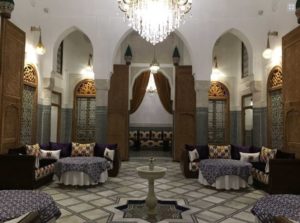





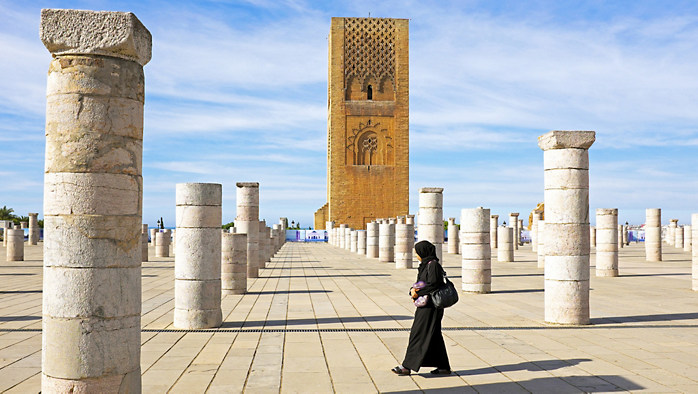
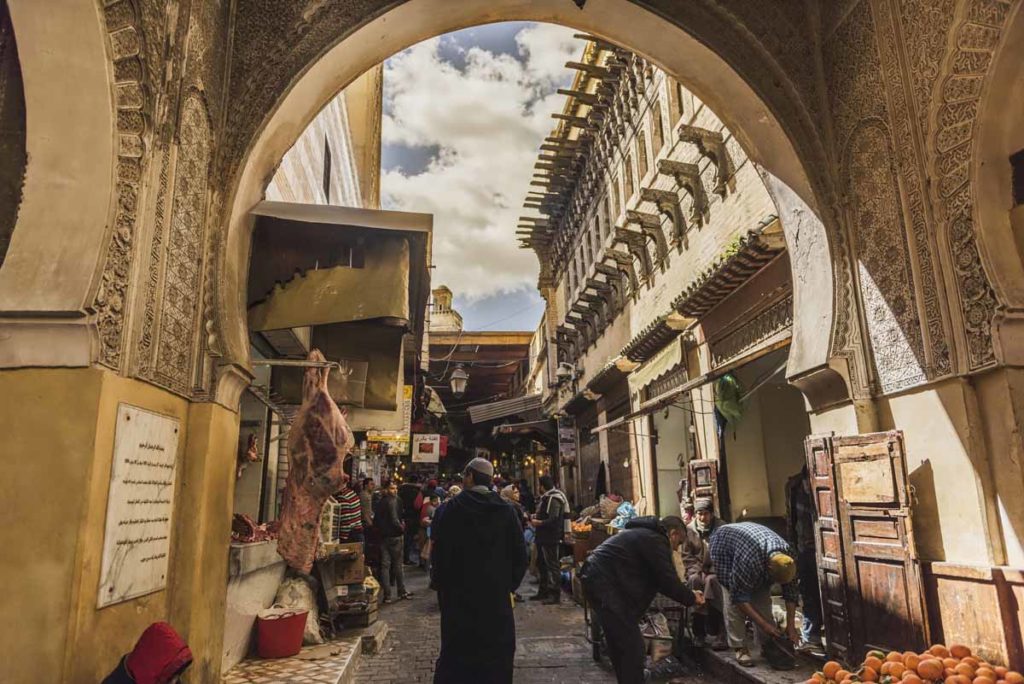






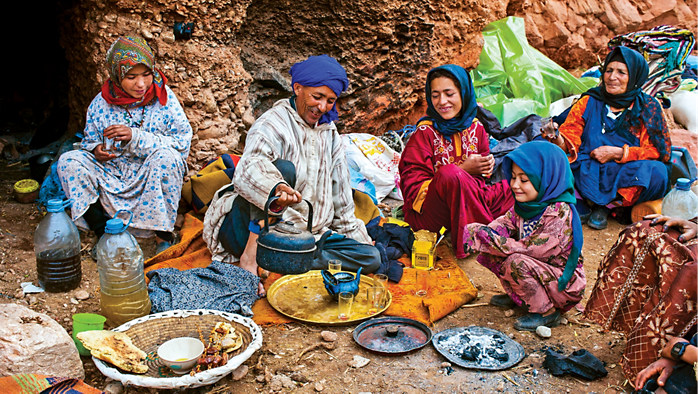








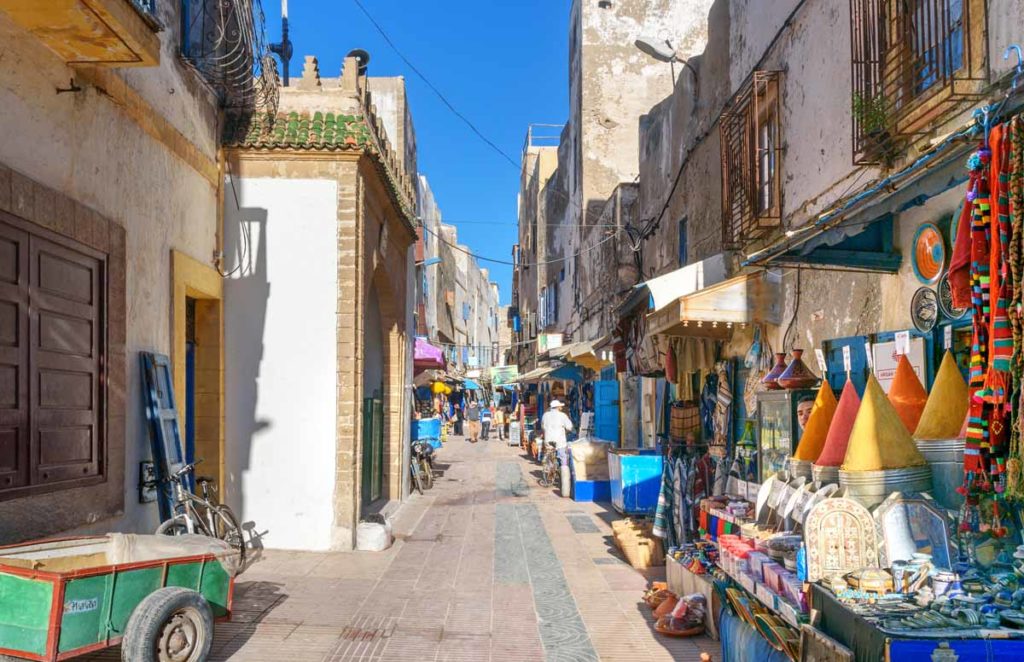

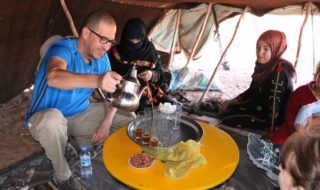


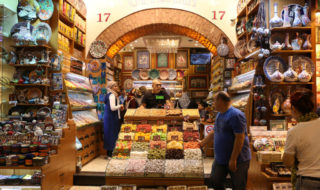
How exciting for you! Morocco is one of the places I intend to visit–sooner rather than later. Have a wonderful time. I can’t wait to hear about it!
Thanks so much Elaine! Having now been in Morocco for a few days with visits to Chefchaouen and Rabat, I can safely say that the country and the lovely people are already exceeding my high expectations!